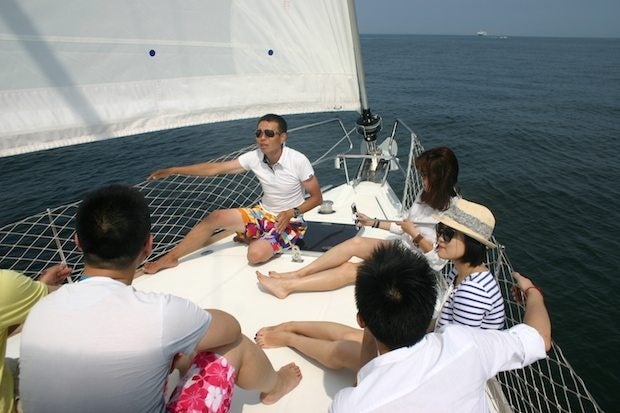
Chinese participants in a sea trial for a Beneteau sailboat at SO! Dalian on June 20, 2015. (Jing Daily)
As China’s middle class gets bigger, sailboats and yachts being promoted by boat companies to Chinese buyers are getting smaller as brands react to a two-year sales slowdown on the mainland.
At this year’s second annual SO! Dalian boating and lifestyle event that took place from June 18 to 21 in the Liaoning Province port city, yacht makers, sailboat brands, and a host of other high-end lifestyle companies promoting private jets, luxury cars, polo, Champagne, and more gathered to promote the trappings of the good life to affluent Chinese attendees.
While the yachts, sailboats, and car models by brands like Rolls-Royce and Porsche on display certainly weren't cheap, the event cast a broader net toward a more mass audience than last year as sales of ultra-luxury yachts have slowed in China.
“The boats are smaller on average,” said Delphine Lignières the founder and CEO of the show’s organizing company China Rendez-Vous, when comparing the show to last year’s event. According to her, this year’s show was geared more toward "the upper-middle class,” which reflects the fact that globally, "the bigger part of the market is on the average boats.”
“The boating industry is like the car industry," she said. "There are different models, different sizes, and different uses, and we really have to explain to people that boating is not just for the super-rich."
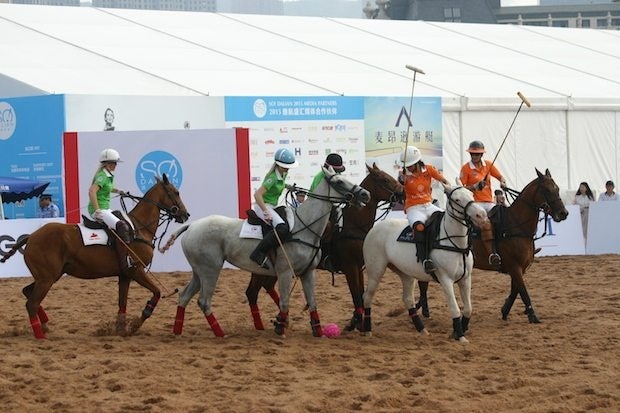
A beach polo tournament at SO! Dalian. (Jing Daily)
As China’s economic growth slows and its anti-corruption campaign continues to hit the luxury industry, the country’s fledgling yacht industry has been seeing a slowdown over the past two years.
“There has been a bubble, basically,” said Thibault de Montvalon, the managing director of French sailing yacht company Beneteau, who stated that his company saw its biggest China years in 2011 and 2012, when it was selling about 70 boats a year. The slowdown hit after the start of the anti-corruption campaign, bringing the company’s annual China sales to about 50 for 2013 and 2014.
“People who were buying boats at the time really didn't know what they were getting into at all, and they had no interest, really,” he said. “The only interest was to acquire something big which could draw attention to them.” He noted that most of these purchases were not made by private owners, but mainly by companies that “all had connection, in one way or another, with marinas, with real estate, with seafront development,” and were purchasing the boats to help promote the industry. “Even if it was not a marina developer, it was someone starting a hotel; someone starting condos, and they wanted to entertain their clients,” he said. “They had no passion or interest. They were not boaters.”
China’s anti-corruption campaign that was launched in November 2012 was also a factor in the slowdown, he said, noting that many of the yachts purchased during this period were used by businesses for entertaining clients or business partners, and often came equipped with rooms for “banquet-style” entertainment and karaoke. “The officials, of course, as well, were part of it,” he said. The slowdown hit the company in late 2012, and the decline in orders occurred “almost from one day to the next.”
As a result, many brands at this year’s SO! Dalian were opting to promote comparatively affordable models to an upper-middle-class and high-net-worth as opposed to ultra-high-net-worth crowd. For example, Beneteau used the event to introduce the dragon-emblazoned “Dragon Warrior” version of its 21-foot entry-level sailboat model, the First 22, which retails for around US$30,000. Many of the other boats on display didn’t extend past 60 feet.
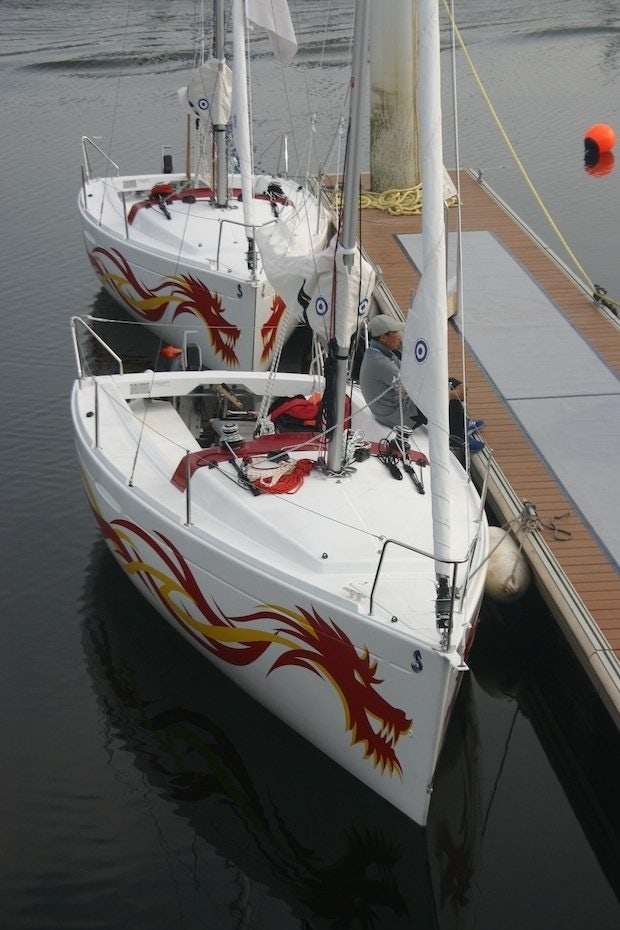
Beneteau's "Dragon Warrior" beginner sailboat models. (Jing Daily)
“We started with the big boats and now we’re trying to expand the market with smaller boats,” said Paul Blanc, the Asia Pacific managing director of French boatyard Jeanneau, who noted that the brand is targeting the upper-middle class as sales have “slowed down on the corporate side,” but “the passion segment is definitely developing. It’s still very much of a niche leisure in China, but we have a small community of people.”
The definition of “middle-class” in this case is a relative one, and the cost of owning a leisure boat in China is still prohibitively costly even for many affluent consumers. In addition to a tax markup of about 43 percent, marina membership fees are often between 1.5 and 2 million RMB (US$241,000 and US$322,000) and are accompanied by a monthly cost.
“They have a very elitist policy of selling memberships,” said Blanc of China’s marinas, which started being developed in 2008 and are located in port areas such as Hainan, Qingdao, Shenyang, and Xiamen. “They usually charge quite a lot, which can be a problem for people who just want to buy a small boat for fishing. If they spend 1 million RMB on the boat, they don’t want to spend another million on a membership to keep the boat in the marina. So that can be an obstacle to really open the market to less wealthy people.”
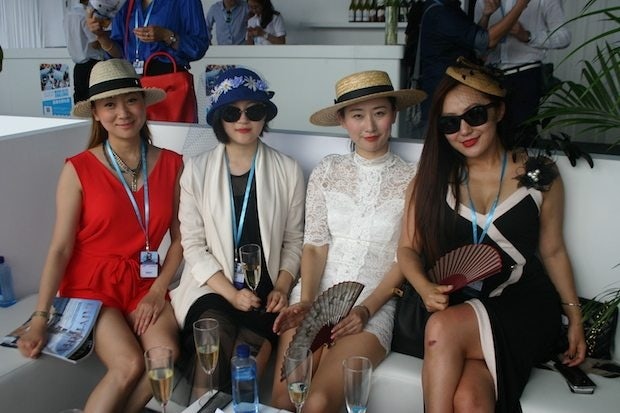
Attendees at SO! Dalian 2015. (Jing Daily)
For those who can afford it, the elitist price often doesn't come with elitist services and promise of a “boat culture” lifestyle to match. The Chinese marinas “offer nothing” other than a space for storage, says de Montvalon. “There’s not club life, there’s no entertainment, there’s no club house,” he said. “I’ve met a lot of wealthy Chinese who could afford to buy the whole marina, but they’re just not getting into it because they think it’s foolish.” He noted that the market may be evening out, however, as marinas lower their rates to compete for the business of a limited number of boat buyers.
Since the industry is so young, brands are also making an effort to educate a consumer base unfamiliar with boating, which is a training-intensive activity. The low number of rich Chinese with seafaring skills is apparent for the Vendée Globe round-the-world yacht race, which has not yet had a Chinese competitor. By presenting in Dalian, the race’s director-general David Brabis hopes to gain more exposure in China, which can in turn create more enthusiasm for the race and boating in general. “We need a Chinese skipper in order to go a step further,” he said, noting that the first race with a Chinese competitor likely “won’t be in 2016; it will be in 2020.”
Also present alongside the yacht brands at SO! Dalian was yacht charter company Dream Yacht Charter, which just launched in China in September and serves as a starting point for wealthy Chinese travelers considering buying a boat.
“They don’t know the characteristics and specifications of each boat,” said Marjorie Fillet, the Asia managing director for Dream Yacht Charter. “It’s a good way for them to compare the boats and become a boat owner afterward.” She said that Chinese clients often book the service for island-hopping trips to Thailand, and almost always opt to hire a crew rather than command the boat themselves. According to her, one Chinese group that chartered an unmanned boat did severe damage to the vessel due to lack of experience, causing the company to stiffen its requirements for boating credentials. The service is also used by many new Chinese boat owners who need to learn more about navigation. “It’s kind of training on board for one week, so they will be more confident,” she said.
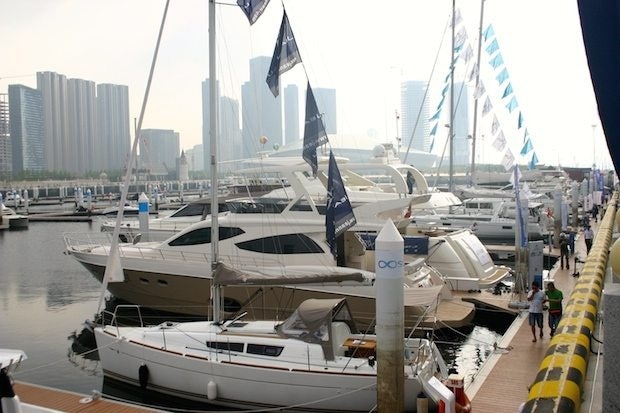
Boats on display at SO! Dalian. (Jing Daily)
When it comes to yachts, companies must adapt to the fact that Chinese buyers have created their own unique culture when it comes to boating, which is quite different from that found in Miami or Monaco. “The use of the boat is really different compared to Americans and Europeans,” said Alessandro Tirelli, the Asia sales director of Ferretti, one yacht company at the event decidedly not in the upper-middle class range: it makes customizable superyachts, and holds the record for the largest yacht ever sold in mainland China—a 112-foot model that beat Dalian Wanda chairman Wang Jianlin’s highly publicized 108-food Sunseeker model.
“Their use is mostly daily use, so with daily use you don’t need that many state rooms,” said Tirelli, while Lignières said “they don’t sleep onboard” because “they are not doing three days or a whole week of navigation.” According to Blanc, the Chinese aversion to the sun means they also spend most of their time on the water indoors, entertaining guests in the air conditioning. “They want more shade on the boat. They’re not interested in a big sunbathing platform where they’re going to get tan. They’re more interested in a lot of sitting place functionalities like bars.” As a result, many brands are creating special China-specific models.
Adaptation to the unique demands of the China market is a big part of yacht brands’ adjustment to Chinese consumer needs. For example, Ferretti recently delivered and trained an entire crew for a 57-foot yacht to a wealthy buyer in rural Hubei Province, who asked the company to deliver the boat by crane to Taiji Lake at Wudang Mountain.
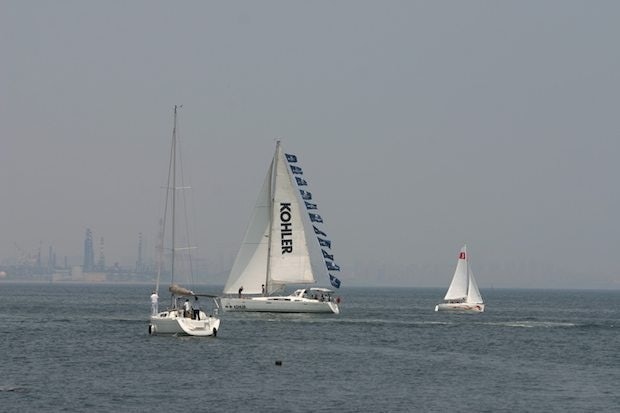
Boats on the water for sea trials at SO! Dalian 2015. (Jing Daily)
There is a small contingent of enthusiastic Chinese boat owners who have embraced the lifestyle, participating in events and traveling to boat shows across the world. De Montvalon estimates that this only makes up about 500 people at the moment. “We have to build a market,” he said. In order to promote long-term growth, SO! Dalian offered not only sea trials for attendees, but also sailing classes for children in order to help create a generation of future Chinese seafarers.
Lignières is optimistic that sailing and yachting will become more widespread in China in the future. “Golf in China started with an elite few. Now you have the upper-middle class playing. It’s similar, now, with boats,” she said. “We had no choice but to start with the elite because it was so expensive. But now, the more boats you have, it’s getting cheaper because it’s easier to access."
In de Montvalon's view, the market will likely 10 years to develop, and growth will likely remain flat or in the single digits for the next two years. He hopes that double-digit growth can be accomplished in five years, stating that “it’s not going to happen tomorrow.”
According to Lignières, the shift from huge corporate buyers to smaller individual buyers is ultimately a good thing for the market. “It’s showing that now boating is a real leisure activity and it’s not considered something to be just used for business and showing off. It’s a real thing that people will enjoy their private life as well,” she said.